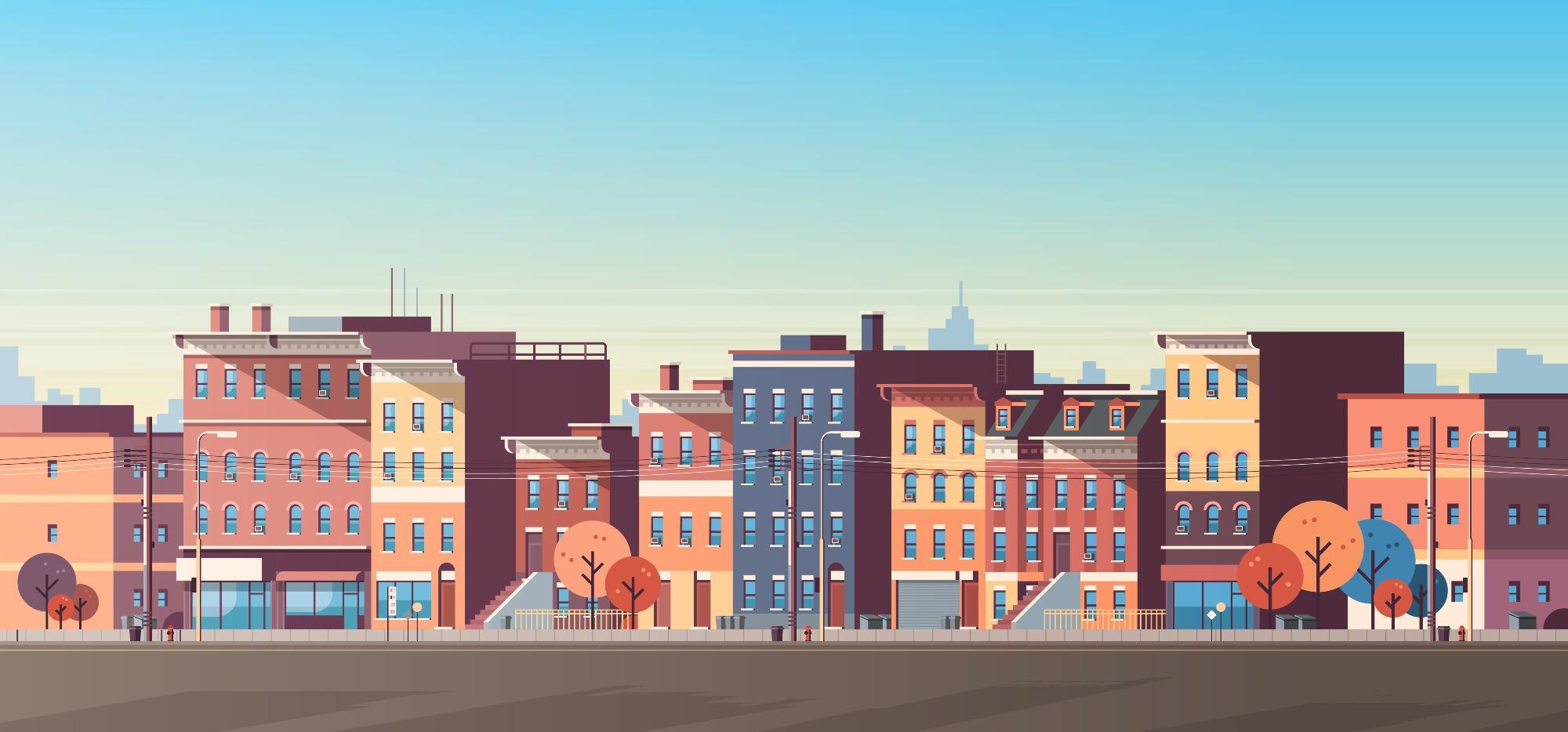The COVID-19 pandemic’s impact has been widespread, with far-reaching implications for multiple sectors of society. One such sector that has become the focus of researchers is the built environment, due to the easy and rapid spread of COVID-19. This article will look at the impacts on residential spaces and provide insights into the future of urban and residential design as humanity moves into the post-pandemic world.

Image Credit: ProStockStudio/Shutterstock.com
Changing Requirements
In just two years, the world has undergone profound and unprecedented changes. The impact of COVID-19 can be seen in the lockdowns imposed worldwide, the growth of everyday mask use, and public health messages warning people to social distance and wash their hands more regularly.
More subtle is the impact on the built environment and modern design paradigms. The construction industry was one of the only industrial sectors to remain open during lockdowns, and the industry has been forced to innovate to meet the changing requirements of society within the pandemic and as it moves into the new normal of the post-pandemic world.
One of the main differences since the beginning of the pandemic has been the effect of increasing ventilation to mitigate the spread of disease. Increased ventilation and access to natural sunlight do not just have the effect of reducing disease spread, but also improve the mental health of residents.
Another societal factor that has had a light thrown on it by the spread of COVID-19 has been urban density. Airborne viruses and those spread by droplet transmission proliferate in enclosed and dense spaces.
Additionally, viruses can be spread by surface transmission when respiratory droplets from infected individuals settle on them, or people do not sanitize their hands properly and touch surfaces. Modern buildings are generally designed to promote social mixing, with open-plan offices in commercial spaces and open play areas in residential spaces potentially aiding the spread of disease.
The Effect of Social Distancing
Edward T. Hall, an American anthropologist, wrote extensively on the distances between people and how this is shaped by cultural norms. Over the past two years, people have shown an increasing preference for public and social distance. This affects their perception of what constitutes a safe distance between individuals.
Ashraf M. Salama of the University of Strathclyde has noted that if pandemics become a common phenomenon, personal distance may become more elastic, with increased distance favored during pandemics and closer interaction favored when it is safer. He has stated that this could be an essential element of research and architectural design going forward.
Working from Home
One of the main stories of the pandemic that reflects changing behavior in the pandemic is the rise of working from home. Before the pandemic, just 5% of the US working population worked from home. If this becomes a permanent trend, this figure is expected to reach 20%. People are now demanding more from their home environment than just a place to live: residential spaces are becoming a hybrid of home and workplace.
This trend will facilitate new ways of thinking about residential design. Whilst laptops are lightweight and allow people to work from anywhere, working well is different. The need for more ergonomic design, removing distractions, and creating a demarcation between work and leisure is vital.
For individuals who have access to a garden, a home office in a shed or similar structure allows a greater degree of freedom and a physical demarcation between home and work life. Shoffice, Platform 5 Architect’s design in north London, is a sculptural form that enhances the space, with a focus on views that are essential for mental health. Regarding indoor work/home spaces, Stolon Studio’s Forest Mews design, a collection of live-work spaces, are an example of innovation in architectural thinking.
Multi-Residential Buildings
Multi-residential buildings are a common element of urban areas. Whilst this helps to solve the problem of space in growing cities by concentrating individuals and families into smaller residential spaces, SARS-CoV-2 has spread more rapidly amongst more densely populated areas, especially in cities with a considerable number of multi-residential buildings. Designers must increasingly think about health and safety and infection control in the new normal.
Jonathan King, principal architect at BKNC, has stated that designers must create a balance between visually pleasing spaces and increasing prioritization of cleaning and maintenance. Moreover, there exists the potential for retrofitting existing multi-residential spaces with elements that promote infection control. Technology can also aid infection control, for example mobile apps that residents can use to call elevators without the need for touching elevator buttons.
The Future
The pandemic has presented challenges for architects and the construction industry, but it also provides huge opportunities for innovation. Further to the previously stated points, biophilic design may play an increasing role in residential spaces in the future, with positive effects on the mental health of residents and providing increased ventilation and climate control. Infection control and mental health considerations are increasingly becoming vital elements of building design, and this trend is likely to increase in the future.
More from AZoBuild: What are the Positive Human Effects of Biophilic Urban Planning?
Further Reading and More Information
Crosbie, M.J (2020) How Might the COVID-19 Change Architecture and Urban Design? [online] commonedge.org. Available at:
https://commonedge.org/how-might-the-covid-19-pandemic-change-architecture-and-urban-design/
Slavid, R (2020) Rethink: How to design home working happy [online] ribaj.com. Available at:
https://www.ribaj.com/intelligence/rethink-design-ideas-for-homeworking-fit-architects-stolen-studio-platform-5-architects-modus-architects
Ruddy, E (2020) COVID-19’s impact on multi-res building design [online] reminenetwork.com. Available at:
https://www.reminetwork.com/articles/covid-19-impact-on-multi-residential-building-design/
Afacan, Y. (2021). Impacts of biophilic design on the development of gerotranscendence and the Profile of Mood States during the COVID-19 pandemic. [online] Ageing and Society 1-25. | cambridge.org. Available at:
https://www.cambridge.org/core/journals/ageing-and-society/article/impacts-of-biophilic-design-on-the-development-of-gerotranscendence-and-the-profile-of-mood-states-during-the-covid19-pandemic/DD800D1346FC112D93F9AEF1D7575CA2
Disclaimer: The views expressed here are those of the author expressed in their private capacity and do not necessarily represent the views of AZoM.com Limited T/A AZoNetwork the owner and operator of this website. This disclaimer forms part of the Terms and conditions of use of this website.